Products You May Like
This content contains affiliate links. When you buy through these links, we may earn an affiliate commission.
In the early hours of April 30, 1975, American troops rushed to evacuate Saigon, along with thousands of Vietnamese civilian allies fighting for limited space aboard U.S. planes and helicopters. Shortly afterwards, North Vietnamese Army tanks drove through the gates of the Presidential Palace in Saigon, marking the end of the Vietnam War. Fifty years later, Vietnam, the U.S., and many other countries impacted by the conflict continue to grapple with the war’s complicated legacy. As we recognize the 50th anniversary of the fall of Saigon, I’ve curated a list of historical fiction about the Vietnam War to reflect on its ongoing consequences.
Many of the most popular books about the Vietnam War center American perspectives, from classics like Tim O’Brien’s The Things They Carried to recent bestsellers like Kristin Hannah’s The Women. What’s missing from most book lists I found about the Vietnam War are books by Vietnamese authors, looking at the conflict through the eyes of characters who lived through and inherited the trauma of violence and political upheaval in their home country. These books, written by authors from Vietnam and Vietnamese diasporas across the globe, contain nuanced explorations of the war, its end, and its wide-reaching impacts on Vietnamese history and culture.
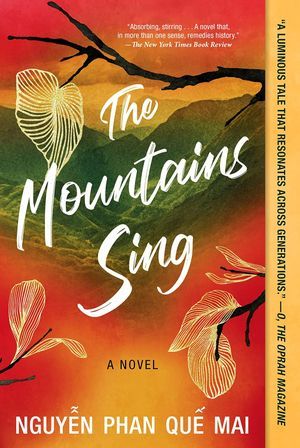
The Mountains Sing by Nguyễn Phan Quế Mai
Vietnamese poet and novelist Nguyễn Phan Quế Mai is one of my all-time favorite historical fiction authors for her ability to craft powerful stories that span generations, wars, and world-shifting political events. In her debut novel The Mountains Sing, Quế Mai paints an intricate portrait of the Trần family, whose matriarch Trần Diệu Lan was forced to flee her family farm in North Vietnam with her six children due to the threat of violence against landowners by the communist government. Forced to make impossible decisions in order to give her family the best chance at survival, Trần Diệu Lan was separated from most of her children, who ended up spread across North and South Vietnam. If you’re looking for multifaceted perspectives on Vietnam’s history and culture before, during, and after the war, I can’t recommend this book highly enough.

Dust Child by Nguyễn Phan Quế Mai
Yes, I did put two books by Nguyễn Phan Quế Mai on the same list because they are both truly phenomenal. While Dust Child also explores the impact of the Vietnam War across generations, it does it in a different way from The Mountains Sing, both in terms of temporal distance from the war and in perspectives from both Vietnamese and American characters. In the current day, we meet Phong, the son of a Vietnamese woman and a Black American soldier, although he never knew his parents. He was left in front of an orphanage as a baby, spent his entire life facing discrimination and hatred, and now dreams of a better life in the U.S. At the same time, Dan, an American veteran, returns to Vietnam with his wife for the first time since the war. Secretly, he’s hoping to find the woman he fell in love with during the war who was pregnant with his child when he last saw her. We travel back in time to better understand how Phong and Dan ended up where they are and the people, politics, and trauma that shaped their lives.

The Sympathizer by Viet Thanh Nguyen
The end of the Vietnam War was marked by chaos, confusion, and desperate attempts by Americans and Vietnamese to escape retribution from the North Vietnamese Army. Author Viet Thanh Nguyen’s The Sympathizer starts at the end of the war and paints a gripping portrait of the global fallout and the treatment of displaced Vietnamese people. Our protagonist is a man who often finds himself adrift between two sides. He’s the son of a Vietnamese woman and a French priest, and he’s now a captain for the South Vietnamese military who is secretly a spy for the North. When the Americans evacuate Saigon, the captain departs with them for California with instructions to continue reporting on American forces to the communists. The Sympathizer is a dark comedy, an espionage thriller, a love story, and so much more. Once you’ve read it, be sure to check out the gripping mini-series adaptation on HBO starring Hoa Xuande and Robert Downey Jr.
Past Tense
Sign up for our weekly newsletter about historical fiction!

She Weeps Each Time You’re Born by Quan Barry
Quan Barry uses touches of magic as a way of exploring the immense grief and loss of the Vietnam War in her fabulist historical fiction novel She Weeps Each Time You’re Born. Rabbit was named for the full moon she was born under in the midst of the war, pulled from the dead body of her mother. Along with the tragedy she inherits with her birth, Rabbit is also given a unique gift: she can hear the voices of people who have died. As Rabbit grows up in a makeshift family of others marked by loss and grief, she travels Vietnam in search of safety and learns about centuries of violence and upheaval in her home country through the stories of the dead. It’s a remarkably powerful story with unique magical elements providing deep insight into Vietnam’s past, present, and future.
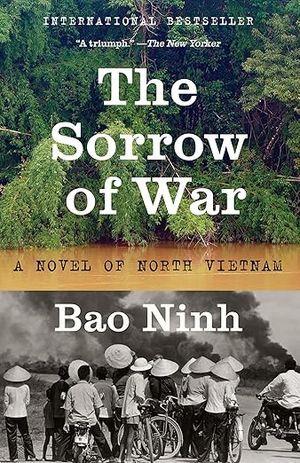
The Sorrow of War by Bảo Ninh, translated by Phan Thanh Hảo
Books from the perspective of American soldiers during the Vietnam War abound. Books exploring the war through the eyes of North Vietnamese soldiers are harder to find. The Sorrow of War, written by a North Vietnamese veteran under the pen name Bảo Ninh, provides a necessary and deeply moving narrative of the conflict and the ways that fighting a war changes a person. The novel tells the story of Kien, a young man pulled from his normal life into 11 years of war, and his life afterwards, marked by trauma, addiction, and immense grief for his lost family, loved ones, and fellow soldiers. If you thought you learned everything you needed to know about the Vietnam War from Tim O’Brien’s The Things They Carried, The Sorrow of War is sure to change your mind.
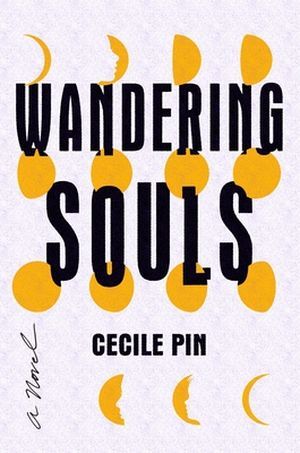
Wandering Souls by Cecile Pin
You can learn something different about the impacts of war by focusing on the stories of survivors after the last battle ends. In Cecile Pin’s Wandering Souls, we see three siblings displaced by the war searching for a way forward. Shortly after the Americans leave Saigon, Anh, Minh, and Thanh’s parents put them on a boat to Hong Kong, with promises that they’d follow with their younger children soon. But before they’re reunited, a tragedy occurs, and 16-year-old Anh is left to care for her younger brothers in an unfamiliar city. Across years, refugee camps, resettlement centers, and multiple countries, the siblings grapple with their grief and try to hold onto each other despite the pain pushing them apart. It’s a lyrical, emotional portrait of one family’s fight for a better future.
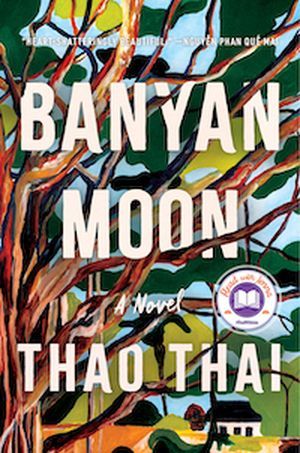
Banyan Moon by Thao Thai
The trauma of war impacts not just those who lived through it, but many generations to come. Thao Thai’s Banyan Moon follows three generations of women whose lives are inexorably impacted by the Vietnam War. Minh was a teenager during the war and later immigrated to Florida in search of a better life for her children. She raised them in an aging manor called the Banyan House. When Minh reaches the end of her life, she leaves behind a daughter, Huơng, and a granddaughter, Ann, whose messy relationship with each other complicates their inheritance of Banyan House. Traveling from 1960s Vietnam to contemporary Florida, it’s a layered story of mother-daughter relationships and a search for healing.
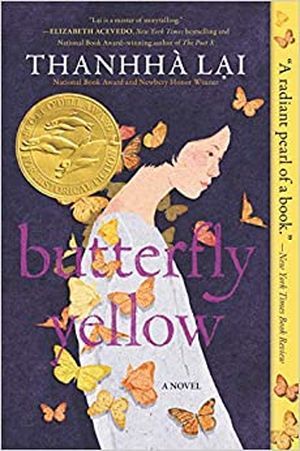
Butterfly Yellow by Thanhhà Lại
Thanhhà Lại’s Butterfly Yellow is a heartbreaking yet hopeful young adult historical fiction novel about two siblings whose paths are shaped by the Vietnam War. When 12-year-old Hằng learned of an opportunity for orphaned Vietnamese children to travel home with the Americans at the end of the war and find adoptive families, she rushed to the airport with her five-year-old brother Linh. But Linh was grabbed from her arms and taken aboard a plane while Hằng was left behind. Five years later, Hằng finally manages to make it to Texas and begins the search for her brother. When she finds him, will he want to be reunited? Will he even remember her? While it’s a story about and written for teens, Butterfly Yellow is an unforgettable story that resonates with readers of all ages.
January 16, 2025, marked the 100th anniversary of the publication of F. Scott Fitzgerald’s novel The Great Gatsby. The New York Public Library celebrated with a party, following a special performance of the Broadway musical adaptation of the novel. Simon and Schuster recently released a new audiobook with an introduction by Jesmyn Ward.
The novel’s theme of reinventing oneself is timeless. The ideas of living a lie by reinventing yourself and wealth making people callous are equally resonant today. How did this novel become so influential, especially on other American novels, and a fixture on high school syllabi? Was it always a bestseller? What aspects of Gatsby hold up, and which ones have aged terribly?
Fitzgerald’s original title for The Great Gatsby was Trimalchio in West Egg. I think the publisher was right to change it. Trimalchio is a character from the ancient Roman work The Satyricon. Combined with the fictional West Egg neighborhood, this reference is cryptic. Gatsby is now an icon in his own right. He doesn’t need a classical allusion for us to notice the theme of excessive wealth.
In a 2014 NPR interview, Maureen Corrigan, the author of So We Read On: How The Great Gatsby Came to Be and Why It Endures, explained how Gatsby became popular. Initial reception was mixed, ranging from the headline “Fitzgerald’s Latest a Dud,” to Modernist poets like T. S. Eliot saying they loved it. When Fitzgerald died in 1940, Gatsby was unpopular (but not out of print). A few years later, it was republished for US service members in World War II, and 123,000 copies were given to members of the military through the Armed Services Editions.
After World War II, Gatsby was no longer an obscure book with mixed reviews. It was considered a classic and became a staple of countless high school syllabi. Constance Grady wrote that Gatsby was ideal for many 20th and early 21st-century English teachers’ emphasis on New Criticism. It’s a great choice for close readings of short passages and analyzing symbolism. However, historical context is also crucial and should never be downplayed, especially in terms of bias.
The Great Gatsby possibly condemns white supremacist theories but uses racist language elsewhere. Tom Buchanan reads white supremacist books and goes on racist rants. Daisy mocks him for this. It’s easy to read this as condemning Tom’s overall bigotry. However, Fitzgerald also expressed racist and antisemitic views in real life.
Sign up to become an All Access member for only $6/month and then click here to read the full, unlocked article. Level up your reading life with All Access membership and explore a full library of exclusive bonus content, including must-reads, deep dives, and reading challenge recommendations.